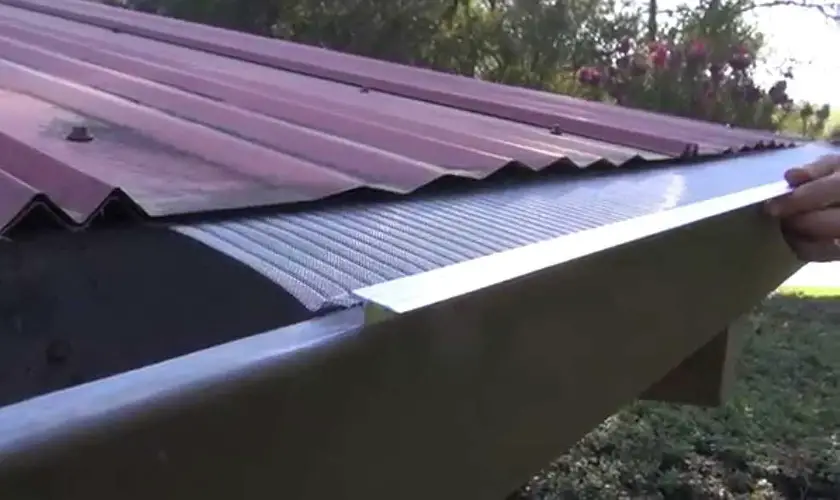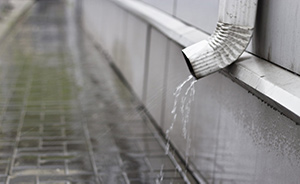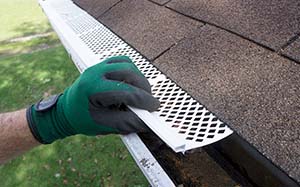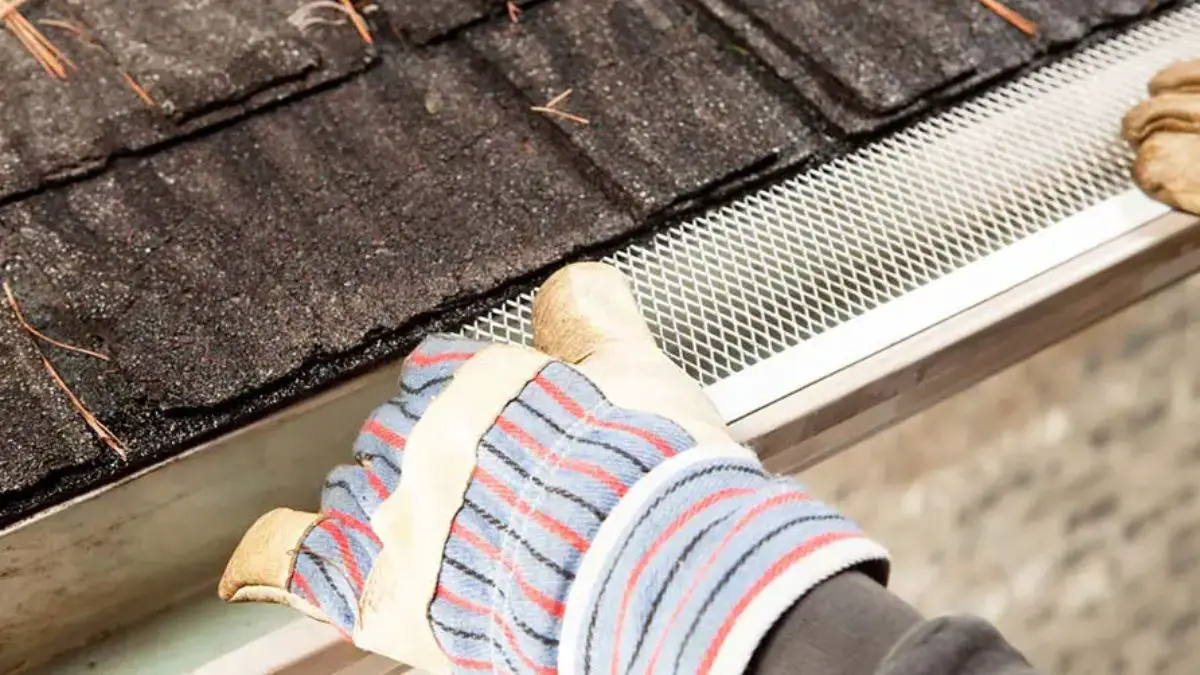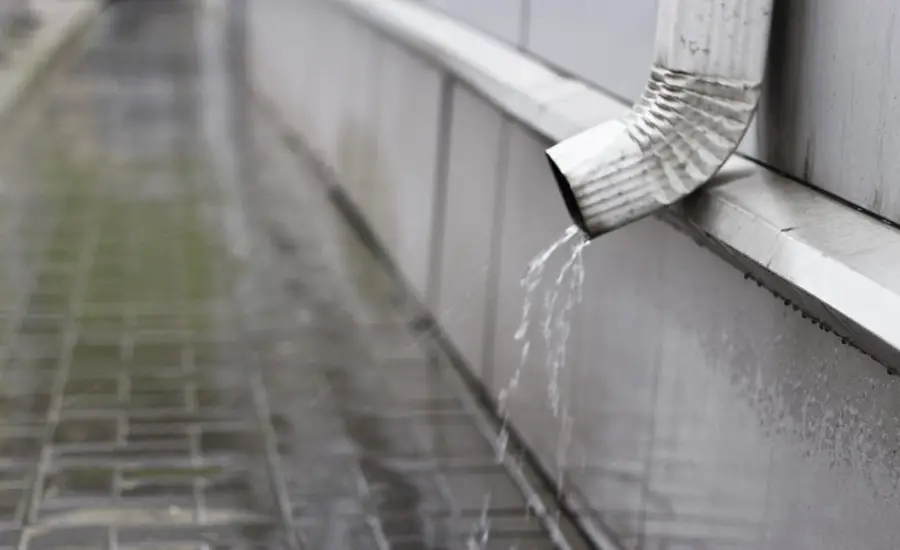
Gutters play a crucial role as part of the drainage system. Water is life but a hazard to your house foundation. If water infiltrates your foundation, it will end up damaging it. Therefore, gutters should drain properly.
Gutters should drain water to at least 4-6 feet, preferably 10 feet away from the house. Ensure you connect the gutter securely to the eave of the roof. Additionally, each downspout should drain a maximum of 35 feet of gutter. Also, carry out routine maintenance to ensure debris doesn’t clog up the drainage system.
Water can lead to structural damage and fungal growth under the house. There’s a raft of measures that you can put in place to ensure your home is protected.
Among these are the installation of gutters and the creation of sloppy drainage pathways around your home.
How Far From The House Should Water Be Drained?
The gutters connect to the downspout, which drains the water away from the house. The downspout is a pipe hanging on the side of your home. Its primary purpose is to carry rainwater from the house into the ground.
If you have a basement, gutter spillage will likely soak through the walls significantly if the downspout does not extend far from the foundation. Install downspouts in intervals of 20 feet and drain the water 10 feet away from the house.
A downspout requires a sloped landing area to drain water from the house efficiently. Ideally, the discharge area should fall away from your home. The recommended slope drop is approximately six inches for every six feet.
If the slope drains in the opposite direction, rainwater will go to your home whenever there’s a downpour. We don’t want that, do we?
One way to achieve a sloped surface is to remove materials easily carried by rainwater, such as mulch. While achieving excellent slopes on impervious surfaces like lots and walkways, water tends to move away even with an imperfect slope.
How Do I Redirect Gutter Water Away From My House?
Here are ways that you can do to redirect your gutter water away from your house.
Downspout Extensions
A downspout hangs a few inches above the foundation. To reinforce the foundation, add rocks or gravel to avoid soil erosion. An aluminum extension can get the job done perfectly. You can get one at your local hardware store.
Besides downspout extensions, you may also drain the rainwater using downspout drains or splash blocks.
The extensions are connected to the downspout using elbows. Elbows are either metal or plastic, and they may collect debris carried by the water as they have ridges. If the debris gets stuck, it may clog and prevent the water from running away.
To avoid this, ensure you frequently clean the extension. Let’s look into methods of draining water away.
Splash Blocks
Just like extensions, splash blocks can also do a commendable job. You place them under the downspout. Moreover, they should tilt away from home. A splash block keeps funneling the water away from the house.
Since harsh weather conditions can easily move the splash blocks, build permanent ones.
Downspouts Pipes
You may add a downspout pipe to help push the water along the driveway or into the yard. These pipes will help drain the further water downhill away from your house.
That said, professional help will come in handy when installing downspout pipes.
Stealth Flow Downspout Connector
The stealth flow downspout connector is a plastic connector ideal for yards with mulch or landscapes. Usually, this connector is laid pretty low. As the name suggests, the connector is inconspicuous in the yard.
It connects to the downspout to the drainpipe. It is tucked away from plain sight and won’t interfere with landscaping designs.
The stealth flow connector is perfect if you are searching for an unbeatable solution for draining water.
The Drainpipe (Buried)
A drainpipe requires a lot of work to install. What happens is that you dig a trench right across the yard and place the drainpipe inside.
Once you dig the trench, you should place the pipe to drain to the right place.
Rain Gardens
Unlike in the previous solutions, a rain garden is a terminating point. Usually, water can gather from the rain, slowly penetrating the ground.
When the water soaks into the soil, it helps in plant growth. This is an excellent solution, especially if you have a steeper slope.
Storm Drain
A storm drain will drain into the driveway. You tie your downspout with an existing storm drain that drains to the streets. Avoid leading the drain in areas where there’s high foot traffic.
Where Should Downspouts Drain?
It said that when it rains, it pours, and yes, it does! It may spell bad news if you do not have functional gutters, downspouts, and draining mechanisms. While you can’t control the force of rainfall, you can direct the waters to the proper channels.
One pitfall with such drainage systems is when they clog from debris or solid substances. When this happens, they can’t function properly. It’s up to you to clean the gutters, downspouts, and extensions.
The water needs a landing place when it follows the right direction and energy.
We’ll look into three rainwater drainage solutions, and you can pick the one that suits you best.
Drainage Pit
A drainage pit accommodates rainwater safely without interfering with your house foundations. Drainage pits are also known as dry wells, drainage wells, or soakaway wells.
You dig a hole three feet long, three feet high, and three feet wide. Fill the hole with gravel and fix a draining pipe to bring in rainwater.
One advantage of a drainage pit is that it is easy to build and can handle a large volume of water once completed.
Here are some requirements for the drainage well
- The drainage should be at least 10 feet away from the wall.
- The pit should be above the groundwater level
- You may adjust the pit dimensions to accommodate larger volumes of water.
Keep in mind local authorities have laws on excavating such pits. Confirm the local laws to avoid penalties.
Rain Barrel
Unlike the drainage pit, the rain barrel is relatively easy to set up. All you have to do is place it near the downspouts to help collect and store rainwater.
When you place the barrel below the downspout, it collects water you can use during drier months.
Rain barrels capacity ranges from thirty to about a hundred gallons. Furthermore, rain barrel maintenance is quite simple. Just use the water collected. Always place it in a protected location to avoid fungal growth.
Rainwater Collection System
This is not a sophisticated or elaborate system, as the name suggests.
While it is not as simple as the rain barrel, neither is its concept complicated. It uses an extensive large underground water collection system.
In short, it is placing large tanks underground to collect water.
The underground tanks collect all the rainwater that passes through the gutters and the downspouts. There is also a pump that channels the water to the desired areas.
The systems come in handy when designing irrigation systems for your home garden.
You can install the rain gutter systems easily, but you may consult a professional. After all, the rainwater collection system creates an effective water management system for the environment.
Conversely, what happens when downspouts are not performing their task well?
What Happens When Downspouts Are Not Doing Their Job?
Usually, when downspouts are clogged, you’ll notice that the gutters start to overflow. Again, when the downspouts lack an extension or are too small, they drain the water damaging the house foundation.
The gutters are sometimes overwhelmed when the downspout cannot deliver as required.
When the gutters are overwhelmed, they’ll collapse, creating an overflow of water around your house.
All these outcomes will result in soil erosion and flooding in your yard or garden. Watch out for wrongly installed downspout extensions or missing splash blocks and extensions. They aggravate the issue leading to flooding.
Should You Bury Your Downspouts?
Besides draining water through the multiple methods highlighted above, you can also bury your downspouts. For starters, there are a few reasons why you may bury your downspouts.
Let’s look at some of these reasons.
Aesthetics
A section of homeowners buries their downspouts to highlight the house. When the downspouts are visible from the front, they might interfere with the original architectural designs.
So some homeowners would prefer to bury it to maintain the house design.
Of course, practicality and achieving a cleaner look for your home are elements. Not many people would bury their downspouts for such a reason alone.
Let’s examine the other reason that motivates people to bury them.
Safety
This is a critical reason and most people want to bury their downspouts. When the tail is exposed and protruding from the wall, people, especially children, might trip over it. Visitors or children could trip over the downspout tail.
The function of the tail is to drain water away from the house. A one-foot tail may easily trip someone over.
Alternatively, a homeowner would rather bury the downspout or use a retractable extension that only rolls out when water flows through it.
Ultimately, a homeowner will bury a downspout to ensure water is drained further from the walls. The downspout can drain into a drainage pit, and the foundations remain strong when water enters such a system.
The buried downspout helps recycle water back into the ground, supporting plant growth.
If burying the downspout, place it 18 inches underground below the frost line. If you plan to use a trench to channel water, it should be at least 15 inches wide.
Final Thoughts
When you realize that water is potentially a negative cause, you will drain it far from the walls and foundation. Rainwater is known to destroy foundations. With extensions, you can direct rainwater to a safe distance.
Luckily, there are various methods you can use to drain water from the realms of your foundation or wall. Most of these solutions extend the gutter system duly placed on the downspouts.
Experts advise that drains be at a maximum distance of 10 feet. The good thing is that you can store the water and use it later to water flowers. You don’t have to worry even if you have lovely landscapes, as you can prevent flooding and erosion through proper drainage systems.
This guide can help you efficiently deal with water problems during the rainy season. Even though we have highlighted multiple solutions, you should pick one best suited for your home and region.
You can do so if you wish to bury the downspouts for safety and aesthetic concerns.
Recommended Reading: Are Gutter Guards Worth It or a Waste of Money? We Ask the Pros


